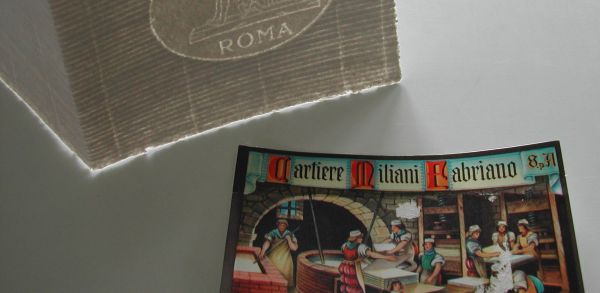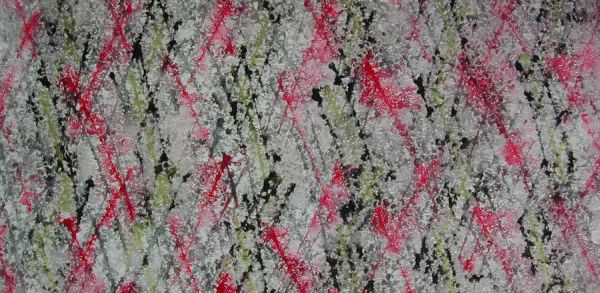|
|
Watermark of Cartiere Miliani Fabriano
The knowledge about papermaking came to Europe - like so many things - from China via the Arabic world. The first paper in Europe was made in Italy in the early 13. century.
|
|
|
Fabriano is one of the oldest papermills in Europe. Traditionally the paper for Italian banknotes has been produced there.
|
|
|
One of their handmade classics is called "Umbria" another ...
|
|
|
... "Roma" - the watermark of the latter shows the Roman twins Romus and Remulus with their wolf mother.
|
|
|
Until some years ago they used to stick this colourful label to their paper packages.
|
|
|
Handmade paper made at Papiermanufaktur Homburg
Johannes Follmer's family has been making paper for 5 generations. He is now running the family's papermill at Homburg/Main, a village of Markt Triefenstein, as a museum - and produces fine handmade paper there.
|
|
|
Mouldmade Paper produced at Zerkall papermill.
|
|
|
Mouldmade Ingres paper produced at Hahnemhle papermill.
|
|
|
Papers from Asia
With their fibres being far longer than the fibres used in western papermaking papers from Asia can be fairly thin and still strong.
|
|
|
Handmade decorated paper
There is a great variety of decorated papers, such as marbled and paste papers.
Left: paste paper made by Susanne Krause (Herrnhuter pattern)
Find more on decorated paper: Buntpapierverlag.
|
|
|
Marbled Paper
Sydney Morris Cockerell (1906-1987) was a British bookbinder, restorer and paper designer, who refined the method for marbling paper with traditional materials such as ox bile and Carragheen moss.
Left: Cockerell Marbled Paper
|
|
|
Handmade decoratede paper varying Rolf Steffens' method.
|
|
|
Towards the end of the 19. century Friedrich Gottlob Keller found that paper can be made from wood. He developed a machine to grate trees thus producing the basis on which cellulose fibres could be made.
Until then paper has been made mainly from fibres that came from the production of fabric or from old clothes, ie. the paper consisted of cotton or linen fibres.
|













